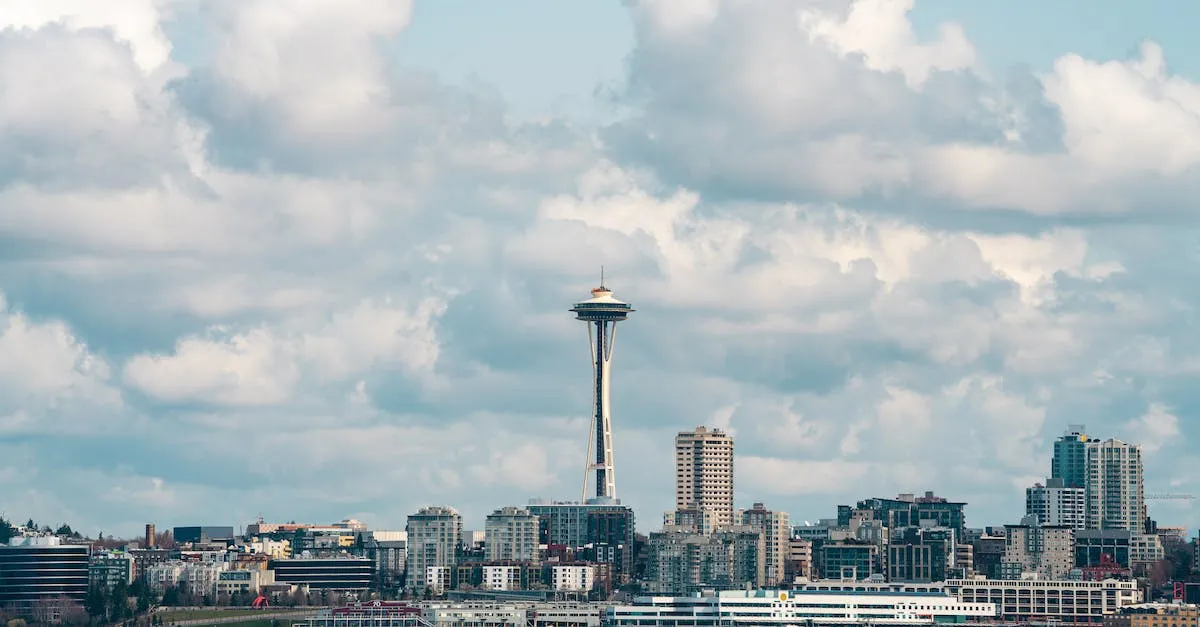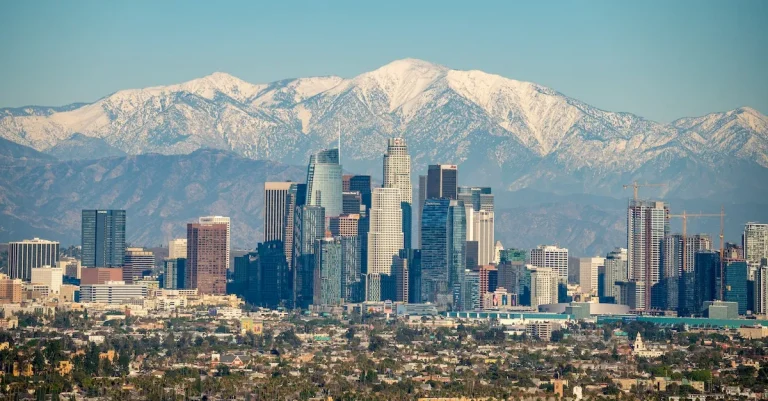Is Seattle Always Cloudy? A Closer Look At The City’S Weather
If you’ve heard that Seattle is gloomy and rainy all year round, you may be wondering if the city really lives up to its reputation. The short answer is that while Seattle does see a fair amount of cloudy days, the truth about the city’s weather is a bit more nuanced.
In this comprehensive guide, we’ll take an in-depth look at Seattle’s climate patterns month-by-month. You’ll learn key facts about the city’s rainfall, cloud cover, sunlight hours, and more. We’ll also explore how Seattle’s weather compares to other major U.S. cities.
Seattle’s Average Rainfall and Cloud Cover
When it comes to the weather, Seattle is often associated with rain and cloudy skies. Let’s take a closer look at the city’s average rainfall and cloud cover to see if this reputation holds true.
Total annual rainfall
Seattle is indeed known for its rainfall, but the amount can vary depending on the year. On average, the city receives about 37 inches of rain annually. This means that Seattle experiences a moderate amount of rainfall compared to other cities in the United States.
Interestingly, the rain in Seattle is spread out fairly evenly throughout the year. While there might be some months with slightly higher rainfall, there isn’t a distinct wet season like in other parts of the country.
Wet season vs dry season
Unlike some regions that have distinct wet and dry seasons, Seattle doesn’t experience a clear division between the two. Instead, the city has a more consistent distribution of rainfall throughout the year.
However, if we were to identify a period with slightly higher amounts of rain, it would be during the months of November through February. During this time, Seattle sees more frequent rain showers, but it doesn’t necessarily mean that it’s constantly raining.
Cloudy days per year
Cloud cover is another aspect of Seattle’s weather that contributes to its reputation for being cloudy. On average, the city experiences around 201 cloudy days per year.
This means that there are approximately 55% of days in a year when the sky is predominantly cloudy. However, it’s important to note that “cloudy” doesn’t necessarily mean it’s raining all day. There are still plenty of days with partial cloud cover or even periods of sunshine.
Seattle’s cloudiness can be attributed to its geographical location and proximity to the Pacific Ocean. The city is often under the influence of marine air masses, which can contribute to the formation of clouds.
For more information about Seattle’s weather patterns and statistics, you can visit the Weather.com website, which provides up-to-date data and forecasts for cities around the world.
Seattle Weather Patterns Month-by-Month
January
In January, Seattle experiences its coldest temperatures of the year. The average high temperature during this month is around 47°F (8°C), while the average low temperature drops to 36°F (2°C). It is also one of the wettest months, with an average rainfall of 5.57 inches (141 mm).
Despite the rain, January tends to have fewer cloudy days compared to other months, making it a great time to explore the city’s indoor attractions.
February
February in Seattle is characterized by slightly milder temperatures compared to January. The average high temperature reaches around 50°F (10°C), while the average low temperature hovers around 38°F (3°C). Rainfall remains high, with an average of 3.50 inches (89 mm) throughout the month.
However, the city starts to see more daylight hours, providing ample opportunities to enjoy outdoor activities.
March
As spring approaches, March brings a noticeable increase in temperature to Seattle. The average high temperature rises to 54°F (12°C), and the average low temperature reaches 41°F (5°C). Rainfall decreases slightly to an average of 3.35 inches (85 mm).
March also marks the beginning of cherry blossom season in the city, creating a picturesque sight for locals and visitors alike.
April
In April, Seattle continues to transition into spring, with further increases in temperature. The average high temperature reaches around 59°F (15°C), while the average low temperature is around 45°F (7°C). Rainfall also decreases to an average of 2.55 inches (65 mm).
This month is a great time to explore the city’s parks and gardens, as the flowers start to bloom and the weather becomes more pleasant.
May
May is one of the most enjoyable months weather-wise in Seattle. The average high temperature reaches a comfortable 65°F (18°C), and the average low temperature stays around 50°F (10°C). Rainfall decreases even further to an average of 1.69 inches (43 mm).
The longer days and pleasant temperatures make May an ideal time to explore outdoor attractions such as the famous Pike Place Market and the beautiful waterfront.
June
June marks the beginning of summer in Seattle, bringing with it warmer temperatures and less rainfall. The average high temperature reaches around 70°F (21°C), while the average low temperature is around 55°F (13°C).
Rainfall decreases to an average of 1.42 inches (36 mm), making it a great time to explore the city’s numerous outdoor festivals and events.
July
July is the warmest month in Seattle, with an average high temperature of 75°F (24°C) and an average low temperature of 60°F (16°C). Rainfall remains relatively low, with an average of 0.70 inches (18 mm).
This month is perfect for enjoying outdoor activities like hiking, kayaking, and exploring the city’s many parks and trails.
August
August is another warm and pleasant month in Seattle. The average high temperature remains around 75°F (24°C), and the average low temperature stays around 60°F (16°C). Rainfall increases slightly to an average of 0.92 inches (23 mm).
This is a great time to visit popular attractions like the Space Needle and take in the stunning views of the city.
September
September brings cooler temperatures to Seattle as summer transitions into fall. The average high temperature drops to around 70°F (21°C), while the average low temperature hovers around 55°F (13°C). Rainfall increases to an average of 1.50 inches (38 mm).
Despite the changing weather, September still offers plenty of outdoor opportunities, such as hiking in the nearby mountains or exploring the city’s vibrant neighborhoods.
October
In October, Seattle experiences a significant drop in temperature as fall takes hold. The average high temperature is around 61°F (16°C), and the average low temperature drops to 48°F (9°C). Rainfall increases to an average of 3.65 inches (93 mm).
This month is a great time to embrace the cozy atmosphere of the city’s coffee shops and enjoy the fall foliage in nearby parks.
November
November in Seattle is characterized by cooler temperatures and increasing rainfall. The average high temperature drops to around 53°F (12°C), while the average low temperature is around 43°F (6°C). Rainfall reaches its peak during this month, with an average of 5.85 inches (149 mm).
Despite the rain, November offers a variety of indoor activities, including visiting museums and enjoying the city’s thriving food scene.
December
December is the coldest and wettest month in Seattle. The average high temperature is around 47°F (8°C), and the average low temperature drops to 36°F (2°C). Rainfall remains high, with an average of 5.94 inches (151 mm).
This month is perfect for embracing the holiday spirit, as the city comes alive with festive decorations and events. It’s also a great time to cozy up indoors and enjoy the city’s renowned coffee culture.
How Seattle Compares to Other Major U.S. Cities
When it comes to the weather, Seattle has gained a reputation for being cloudy and rainy. But how does it compare to other major cities in the United States? Let’s take a closer look at some key factors.
Rainfall totals
Seattle is known for its rainy reputation, and for good reason. The city receives an average annual rainfall of around 38 inches. This puts it in the top 10 rainiest cities in the country. However, when compared to other major cities like Miami or New Orleans, Seattle’s rainfall is still relatively moderate.
In fact, it receives less annual rainfall than these cities.
Number of cloudy days
While Seattle may have a reputation for being cloudy, it is not the cloudiest city in the United States. According to data from the National Climatic Data Center, Seattle experiences an average of 201 cloudy days per year. This puts it in the middle of the pack compared to other major cities.
For example, cities like Portland and Pittsburgh have more cloudy days on average.
Sunshine hours
Despite its reputation for being cloudy, Seattle actually receives a decent amount of sunshine each year. On average, the city enjoys around 2,000 hours of sunshine annually. This is comparable to cities like Chicago and Boston, which are not typically associated with sunny weather.
So while Seattle may have its fair share of cloudy days, it also has its moments of sunshine.
It’s important to remember that weather patterns can vary from year to year, and these statistics are just averages. So, while Seattle may not be the cloudiest or rainiest city in the United States, it does have its fair share of gray skies.
However, it also offers its residents and visitors plenty of opportunities to enjoy the outdoors, rain or shine.
For more information on Seattle’s weather and climate, visit the National Weather Service – Seattle website.
Tips for Making the Most of Seattle’s Weather
Seattle is known for its reputation of being a city with frequent rainfall and cloudy skies. However, with the right mindset and preparation, you can still have a fantastic time exploring this vibrant city. Here are some tips to make the most of Seattle’s weather:
Pack layers and waterproof gear
When visiting Seattle, it’s essential to pack layers of clothing and waterproof gear. The weather can be unpredictable, so having a versatile wardrobe will help you stay comfortable throughout the day.
Don’t forget to bring a waterproof jacket, umbrella, and sturdy shoes to protect yourself from the rain. Layering your clothing will also allow you to adjust to the changing temperatures that can occur throughout the day.
Plan indoor activities as backups
While Seattle offers plenty of outdoor attractions, it’s always wise to have a backup plan for indoor activities in case the weather doesn’t cooperate. Explore the city’s many museums, art galleries, and indoor markets to experience Seattle’s rich culture and history.
The Museum of Pop Culture, the Seattle Art Museum, and Pike Place Market are just a few fantastic options to consider.
Look for sunny breaks
Contrary to popular belief, Seattle does experience sunny breaks even amidst its cloudy reputation. Keep an eye on the weather forecast and look for those moments of sunshine. When the sun does make an appearance, take advantage of it by heading out to popular outdoor spots like the iconic Pike Place Market or the beautiful Green Lake Park.
These spots are perfect for taking in the city’s picturesque views and enjoying some outdoor activities.
Get out early when sunny
If you wake up to a sunny day in Seattle, make sure to get an early start to make the most of the good weather. Seattle is known for its breathtaking natural beauty, so why not take a morning hike in one of the nearby parks, such as Discovery Park or the Washington Park Arboretum?
Getting out early will allow you to beat the crowds and fully enjoy the stunning scenery.
Embrace the atmosphere
While Seattle’s weather may not always be sunny, it is part of the city’s unique charm and atmosphere. Embrace the cozy feeling of a rainy day by enjoying a cup of coffee at one of Seattle’s many renowned coffee shops or spending a relaxing afternoon in a bookstore.
The city also offers an array of cozy pubs and live music venues where you can unwind and enjoy the local music scene. So, don’t let the weather dampen your spirits – embrace it and make the most of your time in Seattle!
Conclusion
While Seattle does see its fair share of gray skies, the city’s weather is more varied than many realize. Rainfall is concentrated during the cooler months, while summers tend to be mild and pleasant.
If you’re considering a move to the Emerald City, don’t let the stereotypes about constant downpours keep you away. With the right mindset and gear, you can thrive in Seattle regardless of the weather conditions.








